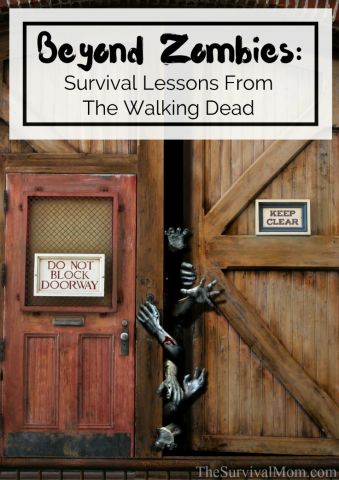The Walking Dead is one of those rare TV shows that, like prepping, captures the zeitgeist of its time. No, not that the dead are actually rising, but rather that we cannot rely on the government to save us and the modern infrastructure we rely on so heavily is all too easily disrupted, broken, or even destroyed.

For those who haven’t watched the shows, TWD focuses more on living humans and their actions and interactions than with zombies, per se. Zombies are part of the setting, just as starships and other planets are the setting for science fiction movies. Just as Star Trek isn’t about the Enterprise itself, TWD isn’t about the undead except when it impacts the living. (TWD usually calls the undead “walkers” because they are the walking dead, but never, ever refers to them as zombies.)
The series started in 2010 and has a recent spin-off called Fear the Walking Dead that takes place in Los Angeles and Baja California. The original series starts in Georgia, eventually moving to the DC suburbs. People who choose to bug in survive in all kinds of places on both coasts. Survivors are found in remote cabins and farms, but also in towns, cities, and even a prison. As time goes on, the survivors find walled suburbs and fortified towns built or modified to keep danger out.
Whether it’s Father Gabriel hiding in his isolated church with the windows boarded up or Tara and her family hiding in a small apartment building in a small town, those who survive are the ones who gathered supplies and locked themselves into a safe place and stayed there while the initial danger raged outside their doors. They didn’t get complacent, they didn’t take unnecessary risks, and they didn’t give up when things looked bad.
The Women's Outdoor News, aka The WON, features news, reviews and stories about women who are shooting, hunting, fishing and actively engaging in outdoor adventure. This publication is for women, by women. View all posts by The WON